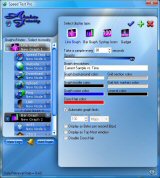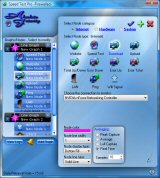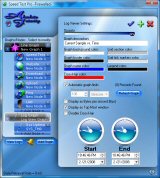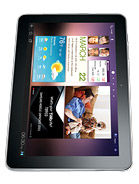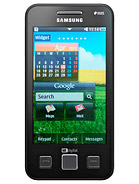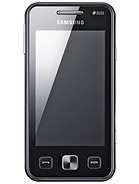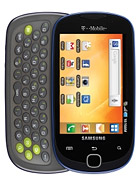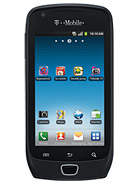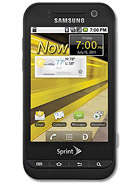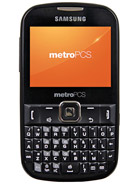
This is default featured slide 1 title
Go to Blogger edit html and find these sentences.Now replace these sentences with your own descriptions.This theme is Bloggerized by Lasantha Bandara - Premiumbloggertemplates.com.
This is default featured slide 2 title
Go to Blogger edit html and find these sentences.Now replace these sentences with your own descriptions.This theme is Bloggerized by Lasantha Bandara - Premiumbloggertemplates.com.
This is default featured slide 3 title
Go to Blogger edit html and find these sentences.Now replace these sentences with your own descriptions.This theme is Bloggerized by Lasantha Bandara - Premiumbloggertemplates.com.
This is default featured slide 4 title
Go to Blogger edit html and find these sentences.Now replace these sentences with your own descriptions.This theme is Bloggerized by Lasantha Bandara - Premiumbloggertemplates.com.
This is default featured slide 5 title
Go to Blogger edit html and find these sentences.Now replace these sentences with your own descriptions.This theme is Bloggerized by Lasantha Bandara - Premiumbloggertemplates.com.
Wednesday, July 27, 2011
WP7 Mango

How touch-sensitive devices work?
Technologies of touch-sensitive devices to control a computer are developed in two directions. First, the monitor can act as a measuring sensor and respond to the tip of your finger or other object and turn the touch into an electrical signal. monitor systems that respond to touch, are widely used in the management of automated counters and other movements that require gentle control. Another solution is to use plastic pads as measurement sensors. First, they were widely used with graphic panels, and today have become an integral part of many laptop computers. Movement of finger
rectangular pad stimulates identical run the cursor on the monitor. In most of these measuring senses moving fingers changes the distribution of electric voltage in switches of pad causing large differences in electrical signals. With the use of pads that respond to touch,moving cursor can reach the speed of up to 100 cm per second.
The system of touch-sensitive monitors - Electricity, released through the coating on the base layer of glass, produces a static electric field. Touching the monitors interfere with the field, and these changes the processor graphicaly displays.
2.Image Processor - The processor constantly scans an image of the electrostatic field. when changes occur in the image, processor makes calculation of coordinates.
3.The appearance of the electric field - a layer of conducting electricity with register changes in electrical voltage caused by touch.
4.The front layer of glass - the glass is electrically low voltage field that is changeable at the touch of a finger.
How hard disc works?
The area of data storage is a set of flat plates coated with magnetized lining.Data is stored as a series of coordinated magnetized area inside lining, called "domains". To read the data or write, a device called an executive device moves heads to read or write to position, vertical compared to the disk, while the plates spinning at high speed. Then, the signals are sent to the head, or the head receives signal, which records or reads data.
2.Head "write-read" - Head reads and writes data hovering 0.002 mm above the plate surface
3.Lever of executive devices - Each head is "read-write" device placed on the light handle that rotates around the pin at one end and runs heads harmonized
4.Data cable - Trough this cable data flow between the hard disk, and devices that we call the "Master Disc". This device manages plates spins and data flow between the heads, "read-write" and the opposite of it and the executive devices.
5.Block devices executive - executive device receives a continuous flow of instructions to run the "read-write" heads.It can start running heads up to 50 times per second.
6.Magnet
7.Movable coil - coil turns inside of the permanent magnet in the center of the executive device. When an electrical impulse reaches the coil, causes her turn, and this in return causes shift of the lever of executive device.
8.Sector - on each track there are several sectors
9.Step motor - This motor is turning plates with speed of several thousand spins per minute
10.Track - Before first use, magnetized coating on each panel shares on the concentric tracks using special signal from the computer, a process called formatting.
11.A set of plates - information is stored on both of their sides.
Read-write Head - Once the head is correctly positioned, the magnet on top of her sends electrical pulses to ensure that the data will be written into proper sector.Binar data (0 and 1), encoded by electric current direction change, turnin into harmonized patterns in the "domains". The data from the disc is read the reversing the procedure, ie the passage of "domain" below the electromagnet, which induces a current in the wire.
2.Wire - this wire transfer written or read data registered between "read-write" head and the supervisory mechanism of the disk.
3."Domains" with data - Each domain is arranged in one of two possible directions. Changing direction in relation to the previous position of "domains" means 1, and when there is no change means zero.
4.Freely ordered "domains" - Where on the disc were never even written data, "domains" are freely ordered.
How mechanical mouse works?
2. Rubber Ball - The ball is turning when you run the mouse over the surface
3. Moving Roller
4. Slotted wheel - This wheel with the slots associated with vertical rollers.
5. Light emitting diode
6. Converter
7. Cable coupling
8. Plastic housing
9. Cable - cable connects the mouse to the computer through input on your computer
10. Chip - The chip processes data from the transducer movement and buttons before it transmitt them to computer
11. Right button - The button pressing their work to encourage the chip and the chip sends signals to the computer
12. Roller - This is moved by rotation of Roller balls
2. Light-emitting diode (LED) - LED sends light through the slits on the outer edge of the wheel
3. Converter - Converter code flashes of light into electrical signals.
4. Roller Lever - Lever roller transfers spins on the wheel with slits.
Tuesday, July 26, 2011
MOBILE NETWORK IN PAKISTAN
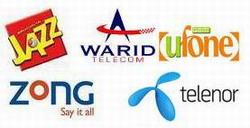
PTML, a 100% owned subsidiary of PTCL was established to operate cellular GSM 900 services. The company commenced its operations, under the brand name of Ufone, from Islamabad on January 29, 2001. Ufone expanded its coverage and has added new cities and highways to its coverage network. Ufone now covers over 100 key cities and prominent highways across Pakistan providing the customers best quality service and value for money.
Paktel
Instaphone
website url : http://www.instaphone.com/
Website Url : http://www.telenor.com.pk/
Telenor acquired the license for providing GSM services in Pakistan in April 2004, and has launched its services commercially in Islamabad, Rawalpindi and Karachi on March 15, 2005. The official opening was held in Islamabad with the President of Pakistan General Pervez Musharraf as the guest of honor and a Telenor delegation headed by CEO Telenor Jon Fredrik Baksaas. On March 23, 2005 Telenor started its services in Lahore, Faisalabad and Hyderabad. Telenor has become the second largest cellular network in Pakistan by launching over 500 destinations in just over a year
Cell phone facts and statistics
Network World, 07/02/01
 "According to FDA and others, the research to date does not show that mobile phone radiofrequency emissions have adverse health effects but there is not enough information at this point to conclude that these products are not without risk. While most epidemiological and laboratory studies related to the radiofrequency emissions of mobile phones have found no adverse health effects, the results of some studies have raised questions that require further research."
"According to FDA and others, the research to date does not show that mobile phone radiofrequency emissions have adverse health effects but there is not enough information at this point to conclude that these products are not without risk. While most epidemiological and laboratory studies related to the radiofrequency emissions of mobile phones have found no adverse health effects, the results of some studies have raised questions that require further research."How much power does a cell phone use?
A mobile phone is designed to operate at a maximum power level of 0.6 watts. A household microwave oven uses between 600 and 1,100 watts.
Cell phone safety
Cell phone industry faces legal tests
Forum: Cell-phone risks
How workers' comp works
FCC/FDA FAQ
Cell phone manufacturers filing patents raises questions
Studies are a mixed bag: are cell phones safe or not?
Forum: Cell-phone risks, tell us what you think
Cell phone specific absorption rates (SAR) are hard to come by
Cellular: a health hazard? Use these resources to help you find out
Subscribe to the Mobile Computing newsletter
The incidence of brain cancer has increased 25% since 1973, according to the National Cancer Institute. Each year, 185,000 Americans will be diagnosed with a primary or metastatic brain tumor, according to the National Brain Tumor Foundation.
How to check for emission levels
The Cellular Telecommunications and Internet Association decided last year that all CTIA-certified cell phones must have their radiofrequency emission levels made available to consumers. The problem is that the information is usually noted inside the box in which the phone is sold, so anyone who wants to compare levels needs to ask a store clerk to open multiple boxes.
You can get the rating for a specific cell phone at the Federal Communications Commission Web site if you have the FCC identification number for the phone and if the phone is new enough to be listed.
Online exclusive: health hazard?
Follow our links to a host of related resources including the Council of Wireless Technology Impacts - citizens and professionals concerned about the safe uses of electromagnetic radiation.
Cell phone industry faces legal tests
Gibb Brower used a cell phone to help run his business from the road or on job sites for four years. He says his cell phones caused the growth of two tumors and a surrounding cancer field on the right side of his head where he held the phone.
FCC/FDA FAQ
Which agency handles what, how are they involved, and other important questions we have the answers to.
Patent filings raise questions
Even as major cell phone manufacturers argued that phones pose no health risks, the companies were filing patents for devices designed to protect users from radiation emitted by the phones.
Scientific studies are a mixed bag
Research into the safety of cellular phones has resulted in some studies that show no adverse effects, and others that raise questions.
Forum: Cell-phone risks
Discuss them with Dr. George Carlo, former director of the cellular industry's research effort on them.
Cell phone ratings are hard to come by
For network administrators looking to buy cellular phones that give off the least amount of radiation, comparing emission levels may not be an easy task.
Cellphone suit will get its day in court
In ruling that could shake the cellphone industry, a federal judge let stand a lawsuit that says companies are making and selling cellphones with the knowledge that they may be dangerous.
IDG News Service, 01/19/01.
Study links mobile phone use with eye cancer
A German study purports to find a statistically significant link between a rare form of eye cancer and mobile telephone use.
Net.Worker, 01/16/01.
Cell phone use linked to brain cancer in new study
Users of mobile phones are at increased risk of developing brain tumors, especially if they use older analog phones.
Saturday, July 23, 2011
Friday, July 22, 2011
Facing the modernization challenge
Facing the modernization challenge

We gather here because the world is at another such fateful moment.
 Now the modern West, led by the United States, sees itself as standing at the "end of history". The ideas birthed by the Enlightenment have over the centuries been sanctified into a religious faith: namely liberal democracy is the perfect form of government, the individual is the basic unit of human society and is endowed with unalienable rights, and capitalism is the only viable economic system. They constitute a new religion called Modernity. Some may take exception to calling these ideas religious. But of course they are. "All men are created equal", but by whom? "libert, galit, fraternit", but from whom?
Now the modern West, led by the United States, sees itself as standing at the "end of history". The ideas birthed by the Enlightenment have over the centuries been sanctified into a religious faith: namely liberal democracy is the perfect form of government, the individual is the basic unit of human society and is endowed with unalienable rights, and capitalism is the only viable economic system. They constitute a new religion called Modernity. Some may take exception to calling these ideas religious. But of course they are. "All men are created equal", but by whom? "libert, galit, fraternit", but from whom?From political capitals to NGO headquarters, they seek to direct how every country should be governed. From central banks to corporate board rooms, they try to regulate how goods and capital must flow around the globe. In Oslo they beatify their saints. In the Hague they sit in judgment of those they say are criminals against all of humanity. In editorial rooms they propagate it all 24/7. Rarely in human history have we seen grandeur so total.
Yet, history hands us another interesting moment. China, with a quarter of the world's people, has in half a century modernized at a pace and scale no one dreamed of. Though many problems remain, its accomplishments are beyond dispute. Yet its modernization is occurring outside the holy temple of Modernity. It does not hold elections, yet its government enjoys popular consent that is among the highest and most sustained in the world. The individual does not profess to have God-given rights and is part of a holistic society, yet he possesses personal liberties as wide as any in Western societies. Its economic success derives from effective use of capital but not Capital-ism.
Outside the Western world, with a few notable exceptions, Modernity has failed to deliver its promise. Many long suffering peoples of the world have subjugated their cultures to adopt Western values that were sold as universal values. They hold their elections and build their parliaments and write their laws, and yet, are still mired in poverty and civil strife. The Arab Spring? Don't hold your breath.
In the Western world itself, the ideologized version of the Enlightenment is proving to be the undoing of the success the West has achieved based on these very ideas. The US armed forces are trying to transform thousand-year-old societies from half ways around the world into its own image, while the state of California, the world's sixth largest economy, is mired in complete political dysfunction and bankrupt. Its middle classes are languishing. Here in Europe, 20-year-olds (and 19 and 18) are rioting on the streets to protect their retirement pensions.
Two hundred years ago, in an inward looking China, Emperor Qianlong's hubris was only harmful to China itself. Today, we have an inherently expansionist and self righteous West, with universal moral claims and in a headlong pursuit of an inextricably linear future for all of humanity, its hubris has entirely different consequences.

There are two paths before us, and two outcomes. A still powerful West finds in itself the wisdom that eluded Qianlong and shifts from a worldview of universality to one of plurality. It recognizes the fact that no truth is forever, that Modernity is indeed a product of cultural developments unique to the West and are not universal; and perhaps the Enlightenment is no longer enlightening, and perhaps Modernity is not so modern any more. A China that marshals enough courage from its ancient heritage and recent accomplishments articulates not just what it is not but what it stands for. The narrative is there and it is credible. Will China tell it? Will China debate it?
Or, an incumbent West insists that its ownership of the truth is perpetual and indefinite. The individual is indeed God himself; liberal democracy is an end in itself not a political system that works for some peoples some of the times and not all peoples all of the times. A rising China that is defensive in the face of such overwhelming intolerance that is religious in nature finds itself unable to justify its development to its own people or to the world. It is intellectually frustrated, it protests, it reacts. This is indeed the likely path on the current trajectory.
We ask today at the birthplace of Modernity, what's it going to be?
The author is founder of Chengwei Capital; and Henry Crown Fellow at the Aspen Institute. These are excerpts of a speech delivered as part of the panel discussion "The European Union and China in the 21st Century" at the 9th Euro-China Forum held at UNESCO, Paris.
Pak, China to launch satellite on Aug 14
Pak, China to launch satellite on Aug 14
The satellite would be sent into the orbit on the Independence Day of Pakistan as a mark of the Sino-Pak friendship, an official said after Prime Minister Syed Yousuf Raza Gilani`s visit to China`s Academy of Space Technology (CAST) here on Friday.
The prime minister went around several sections of the academy and observed the activities and research being carried out there.
He was briefed about the space workshop and vacuum chamber of the academy where Pakistan`s satellite PAKSAT-1R is being manufactured.
An agreement for manufacturing of the satellite by CAST was signed in 2008 during President Asif Ali Zardari`s visit to China.
EXIM Bank of China has provided a soft-term credit of 86.5 million RMB (Chinese currency) for the manufacturing of PAKSAT-1R, carrying a maturity period of 20 years.
Pakistan had launched its first satellite Badar with the Chinese cooperation in 1990. The communication satellite will have 30 years` transponders – 12 in C-Band and 18 in Ku-Band – each of 36 MHz bandwidth. The programme is in line with Pakistan`s Medium Term Development Framework objectives and may provide better satellite communications for Pakistan.
The Pakistan Space and Upper Atmospheric Research Commission and China Great Wall Industry Corporation are jointly developing the new satellite.
Communications
Publications (International / National / Regional) | Radio & TV
Communication systems in Pakistan have improved at a rapid pace in the last decade. The internet and satellite systems have rapidly changed the landscape from which Pakistan communicates. Moving from a government run system to independent carriers, communicators have options and a range of products to choose from. Cell phones/mobile phones are everywhere and there are various independent companies that compete with each other. The internet of course, late in coming to Pakistan, is just as important there as it is in the rest of the world. Again, as with other communication devices, there are independent companies and providers that offer ranges in products and services. Under communications are also radio and television and which have also undergone major transformation with the privatization of businesses. They are briefly mentioned here and for more information, please see the links above.
The domestic telephone system is mediocre but improving; service is adequate for government and business use, in part because major businesses have established their own private systems. Since 1988, the government has promoted investment in the national telecommunications system on a priority basis, significantly increasing network capacity. Despite major improvements in trunk and urban systems, telecommunication services are still not readily available to the majority of the rural population.
Domestic: Microwave radio relay, coaxial cable, fiber-optic cable, cellular, and satellite networks
International Country Code: 92
Satellite Earth Stations: 3 Intelsat (1 Atlantic Ocean and 2 Indian Ocean)
Operational International Gateway Exchanges: 3 (1 at Karachi and 2 at Islamabad); microwave radio relay to neighboring countries (1999)
Radio Broadcast Stations: AM 27, FM 1, shortwave 21 (1998)
Radios: 13.5 million (1997)
Television Broadcast Stations: 22 (plus seven low-power repeaters) (1997)
Televisions: 3.1 million (1997)
Internet Country Code: .pk
Internet Service Providers (ISP's): 38,309 (2005)
Internet Users: 7.5 million (2005)
Wednesday, July 20, 2011
Speed Test

 Speed Test doesn't just monitor your connection,
Speed Test doesn't just monitor your connection,it will actually download a file on a regular basis to test your connection.

Display graphs over time of your connection behavior and maximum bandwidth.
Speed Test is a meter that monitors your internet connection, web site, cpu, memory, Hard Drives, Wifi, LAN, Processes and much more all in real time and will store all data recorded into an log, so it can be easily imported into almost any application. This data can be used to help in resolving problems with your internet connection or computer. Speed Test is a must for resolving connection or computer issues. Speed Test has the flexibility to allow you to view the data in many ways to suit your needs.
If you have a computer, then Speed Test is a must have product.


- Measure your actual maximum Bandwidth Speed by downloading from our server.
- Measure your Quality of Service.
- Test your own web site's speed, connectivity, response time and errors.
- Test your Home network or LAN's speed.
- You can monitor network connections as well as Broadband Internet connections.
- You can also monitor dial-up connections using the (local Host).
- You can Monitor as many connections as you need.
- Quick and easy viewing of logs inside of graphs.
- Ping Packet size up to 1k.
- Ability to ping a website to estimate connections speeds.
- View your WIFI signal strength with a graph in real time.
- View CPU usage in graphs. (Supports dual/quad cores and more)
- View Memory status in graphs.
- View Hard Drive space in graphs.
- View Hard Drive activity in graphs.
- View System uptime in graphs.
- View Battery status in graphs.
- View a Processes Memory usage in graphs.
- Alert Wizard, allowing you to print, run an app, restart, send an email under any condition that you specify.

Click image to enlarge
Getting Started
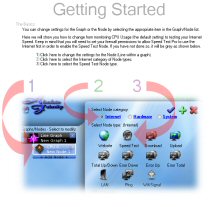
Control Panel
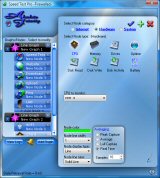
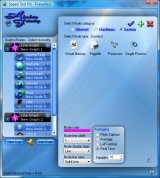
Alert Wizard
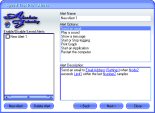
Line Graph



Bar Graph

Systray Icon Graphs

 Click here to see the online Speed Test manual
Click here to see the online Speed Test manual

Download
Some of the features are disabled for the the freeware version. You can purchase a Registration key to unlock the full potential of Speed Test. This product does function without a registration key for trial purposes, however keep in mind that most of the features are disabled. You will receive a registration key within 5 seconds after your purchase.AF Speed Test Setup Ver 1.0.733.exeIf you have any questions, please see our Frequently Asked Questions
File Size = 5.2 MB
System Requirements
- Windows 95/98/ME/XP/Vista/Win 7
- Windows NT 4.0 SP4 or later
- Pentium 366MHz or greater
- 32MB RAM
- 100MB free hard drive space for logs
- Internet Connection
Pricing
Click Here to see the pricing information.
Status
Released V1.0.733 4/1/10Version History
- 1.0.733
Bug (Fixed) = Misc small bugs.
- 1.0.7
Feature (Added) = Easy to use interface.
Feature (Added) = Glass look and feel.
Feature (Added) = Longer tooltips times.
Bug (Fixed) = Installation issues on some systems.
- 1.0.6
Bug (Fixed) = Large drives show incorrect drive space.
- 1.0.5
Feature (Added) = Bandwidth Test Trial.
Feature (Added) = Windows Vista - Speed Test Sidebar Gadget addition.
Bug (Fixed) = Task Bar Popup Title alignment on Vista.
- 1.0.4
Bug (Fixed) = Removed Debug.
Bug (Fixed) = Start with CPU.
- 1.0.3
Bug (Fixed) = Better support for Win98/95.
Bug (Fixed) = Error 48, PSAPI.DLL on Systems less than XP.
Bug (Fixed) = No WMI error.
- 1.0.2
Bug (Fixed) = View Log data, shows records not recorded.
Bug (Fixed) = Windows vista does not clear region from Bar graph to Line graph.
Bug (Fixed) = Support for all DPI and Font settings.
- 1.0.1
Skipped.
- 1.0.0
Release Version
Awards

















